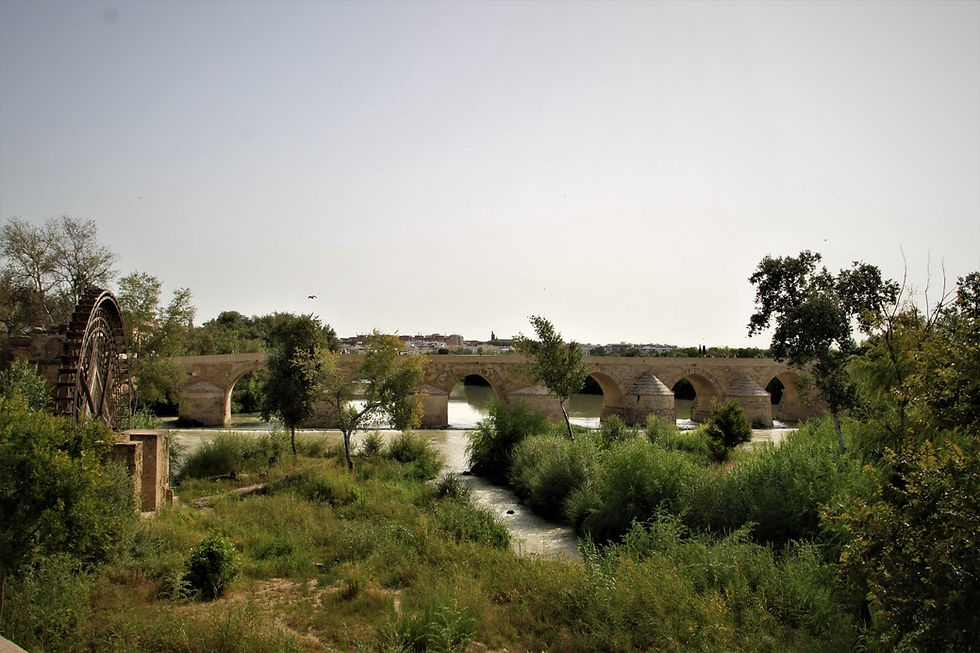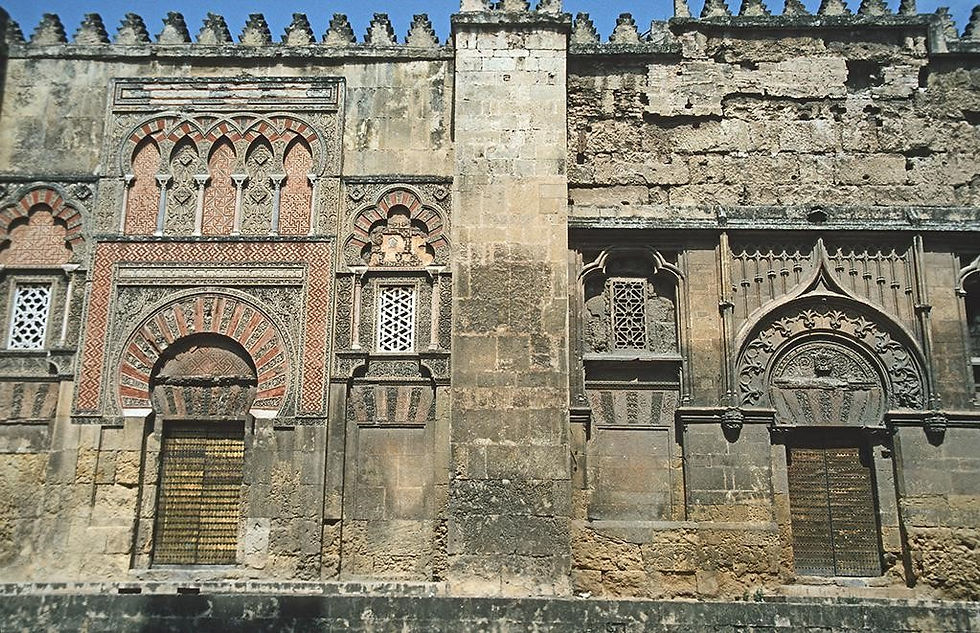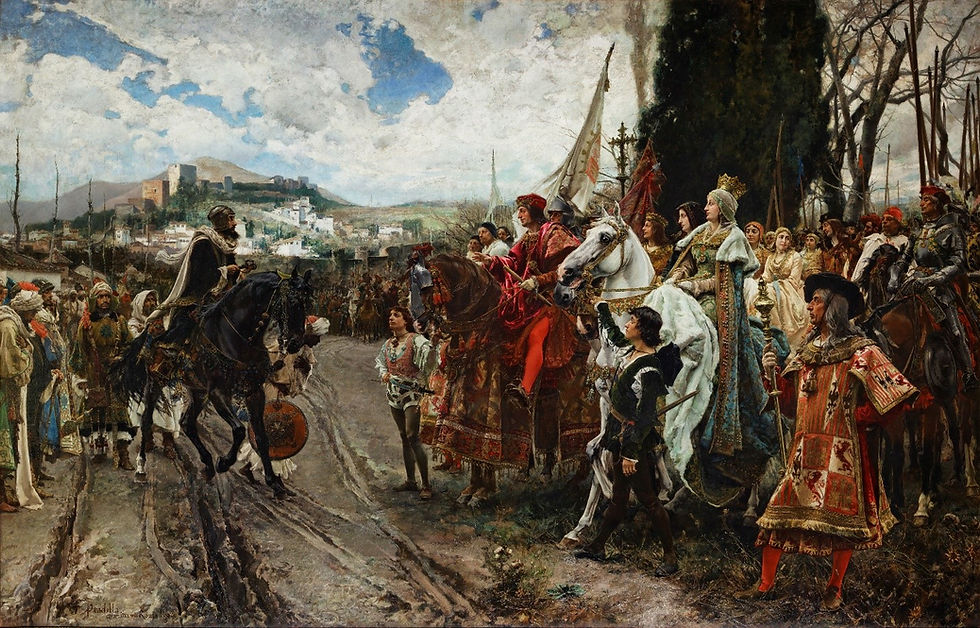Polina Ignatova | Lancaster University

‘It is hard to convince somebody who has seen the Alhambra that Islam is about brutality, about violence’, – stated Abdulhasib Castiñeira, then the director of the Granada Mosque (opened in 2003) in a December 2006 interview. Two major architectural monuments created by the Muslim dynasties in the Iberian Peninsula – the Alhambra complex and the Mosque-Cathedral of Cordoba –play an incredibly important role in the interactions between Muslim and non-Muslim populations. Reminding us of the conflicts and the struggle for power in the Iberian Peninsula, they remain a symbol of universal human values and artistic achievement.
Following early Islamic conquests, from the eighth century onwards Muslim Spain was home for Arab elites, Muslim Arab and Berber soldiers, as well as significant Christian and Jewish communities. That diverse society has left ample evidence for co-existence and mutual influence of Muslim and non-Muslim populations, manifested in architectural, artistic, and scientific achievements. While historians still debate as to what extent religious tolerance was practiced under the Muslim role we can confidently say that Samuel P. Huntington’s made an exaggeration claiming that ‘conflict along the fault line between Western and Islamic civilisations has been going on for 1300 years’.

Having conquered the Iberian Peninsula in the eighth century the Umayyad dynasty (711-1031) brought to Cordoba cultural prosperity, gardens, lit streets, fountains, and running water. Like in other areas which fell under the Islamic rule, the Umayyads did not seek to disrupt the existing social order, neither did they want to destroy local buildings or infrastructure. Keeping old constructions was not only pragmatic. By restoring and maintaining Roman structures the Umayyads emphasised the continuity of power and the legitimacy of their rule. For example, in Cordoba Islamic engineers rebuilt the sixteen-arch Roman stone bridge over the river Guadalquivir.

The Cordoba Mosque was built in stages between 786 and 988 on the site of a small Christian Visigoth temple San Vicente. Like many early Islamic structures, it preserved Roman and Visigothic columns, which were re-used in its construction.
The architecture of the Mosque came to be deeply revealing of the Umayyads’ welfare. Over the decades, each Caliph added another extension to the Mosque, which, as the result, came to reflect different stages of the Umayyad caliphate in Spain. The extension under Caliph al-Hakam II added a secret passage connecting the mosque to the adjacent palace and was to be used by the Caliph only. The last building phase was supervised by al-Mansur, a regent for young Caliph Hisham II. Al-Mansur’s extension copied the forms of the previous phases, without creating an individual style, thus reflecting the decline of the dynasty.
The mosque was captured during the Christian conquest in 1235 and consecrated as a Catholic church. In the sixteenth century, Charles V renovated parts of the building, turning it into a large cathedral. Fortunately for us, he kept many original Muslim parts, such as the famous ‘forest of columns’ and the mihrab – a prayer niche which also indicates the direction of Mecca, constructed to increase the acoustics, so an imam’s voice could be heard all over the mosque. Legend says that initially construction workers, stunned by the beauty of the decoration, refused to destroy the Mosque. When Charles V entered the renovated building he reportedly exclaimed: ‘Had I known what was here, I would never have dared touch the old structure. You have destroyed something that was unique in the world and added something one can see anywhere!’ Even though the cathedral had disrupted the original structure of the mosque, it also possibly contributed to its survival, as places of worship were regularly maintained.
Indeed, the Christian conquest was not merely a takeover of former Muslim territories. More likely it led to a rather complicated symbiosis. The last Muslim kingdom, Granada, survived other Muslim states of the Iberian Peninsula because it fell under Christian suzerainty in 1238. It was the Christian conquest that allowed Granada to develop from a minor provincial town into a city, as it became a refuge for the Muslims displaced by Christian armies from other areas. One of the major monuments of Islamic architecture – the Alhambra – was therefore constructed when Islamic rulers were rapidly losing their power in Iberia.

The word ‘Alhambra’ is an abbreviation of the Arabic Qal’at al-Hamra meaning ‘the red fort’, possibly because of the red clay of the surrounding terrain. A fortified structure of irregular shape, it is situated on a hill, which in medieval sources was known as Sabikah. The first palace to be built on that hill belonged to the Jewish vizier Yusuf ibn Naghrallah, who served the Berber dynasty of the Zirids. One of the sources accused Yusuf, who was murdered in 1066, of attempting to build a more impressive palace than the king’s. Unfortunately, Yusuf’s palace has not survived, neither has the one built by the Zirids. The latter allegedly had a tower topped with a bronze sculpture of a warrior with a shield and a lance riding a rooster, which served as a weathervane – a clear reference to the famous weathervane which crowned Al-Mansur’s palace in Baghdad.
The Alhambra complex as we know it is the work of Muhammad V of the Nasrid dynasty: during his rule, a number of buildings were decorated and many more were constructed. The complex comprised three sectors protected by a city wall. The Alcazaba, or citadel, provided accommodation for the soldiers guarding the city. It also had dungeons, consisting of dome-shaped rooms accommodating the prisoners and also serving as storerooms for grain, spices, and tools. Lavishly decorated royal palaces with tunnels for guards running under the main rooms and advanced water supply systems were occupied by the sultan and his family. A little town known as the Medina maintained and supplied the palaces.
In 1492 Muhammad XII, the last Muslim sultan in Spain surrendered Granada to Ferdinand II of Aragon and Isabella I of Castille. Throughout the sixteenth century Alhambra was occupied by Christian aristocrats and monks, was abandoned in the eighteenth, before becoming a popular tourist destination in the twentieth.

The status of both monuments – the Cordoba Mosque-Cathedral and the Alhambra complex – remains complicated. For instance, it has been suggested several times that the Mosque-Cathedral of Cordoba could be shared by Muslims and Christians. Making it a shared space for Muslim and Christian prayer indeed seems possible given that the surviving mosque parts are separated from the Christian area. However, the Catholic church opposed this idea declaring that canonic law allows non-Catholic rites in cathedrals only in exceptional circumstances.
For example, in 1974, a year before Francisco Franco’s death, Saddam Hussein, who was then the vice-president of the Iraqi Revolutionary Command Council, was permitted to pray in the Cordoba Cathedral, and in 1995 similar permission was granted by the Bishop of Cordoba to Saudi Prince Abdul-Azzis al Saud and his entourage.

In Granada, the opening of the new Great Mosque in 2003 was initially met with some amount of suspicion from the locals. At the same time, following the 9/11 terrorist attacks and the bombings of Madrid on March 11, 2004, Granada, whose largest industry is tourism, received an even greater influx of visitors. In the aftermath of the terrorist atrocities, an increasing number of people came to Alhambra to understand Islam in its entirety rather than viewing it through the lens of fundamentalism. To this day the Alhambra complex remains Spain’s most visited landmark, offering a release from Huntington’s grim forewarnings.
To a large extent, human history is a history of conflict. And while conflicts continue around the globe, art and architecture can offer us not only temporarily escape from the often-distressing reality, but also an alternative vision. The Alhambra complex and the Cordoba Mosque-Cathedral remind us that something beautiful can emerge from the interactions among different communities and cultures. As the surviving monuments of Muslim architecture in Spain remind us, Huntington’s ‘clash of civilisations’ was not the case in the past, neither does it need to be the future.
----------------------
Dr Polina Ignatova’s research interests focus on how knowledge was generated and received in the Middle Ages. She is currently working on developing her thesis into a monograph, provisionally titled 'Raising the Dead: The Meaning and Purpose of Restless Corpses in Medieval English Narratives'. She also acts as the Director for ePublishing at Progressive Connexions network and has recently accepted a postdoctoral position at the University of Linköping (Sweden) to work on her project ‘Medieval Knowledge Exchange: Strategies for Acquiring, Recording, and Disseminating Information about Fish between 1100 and 1400’. Click here to find out more.
Twitter: @paulineignatova.









